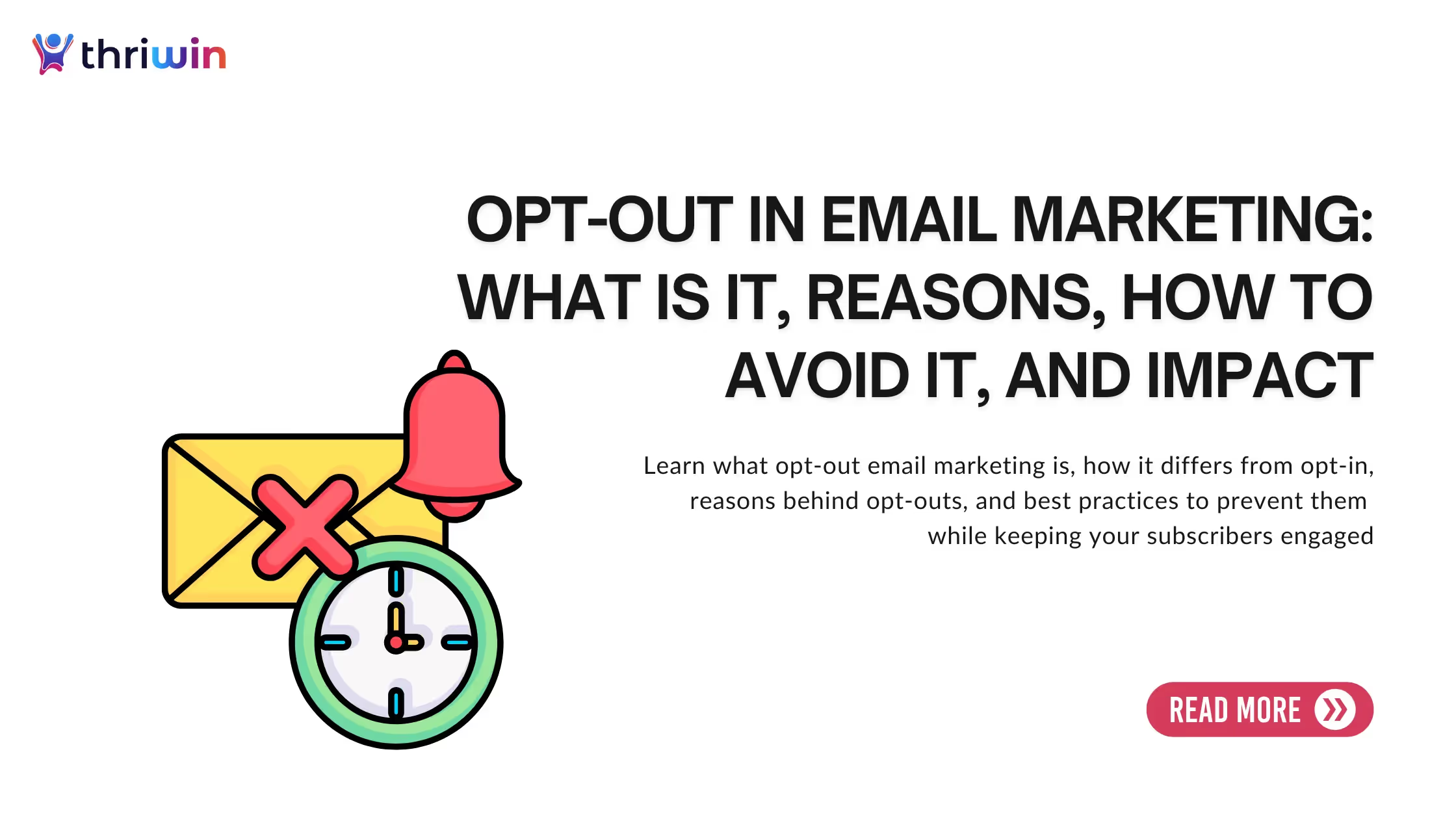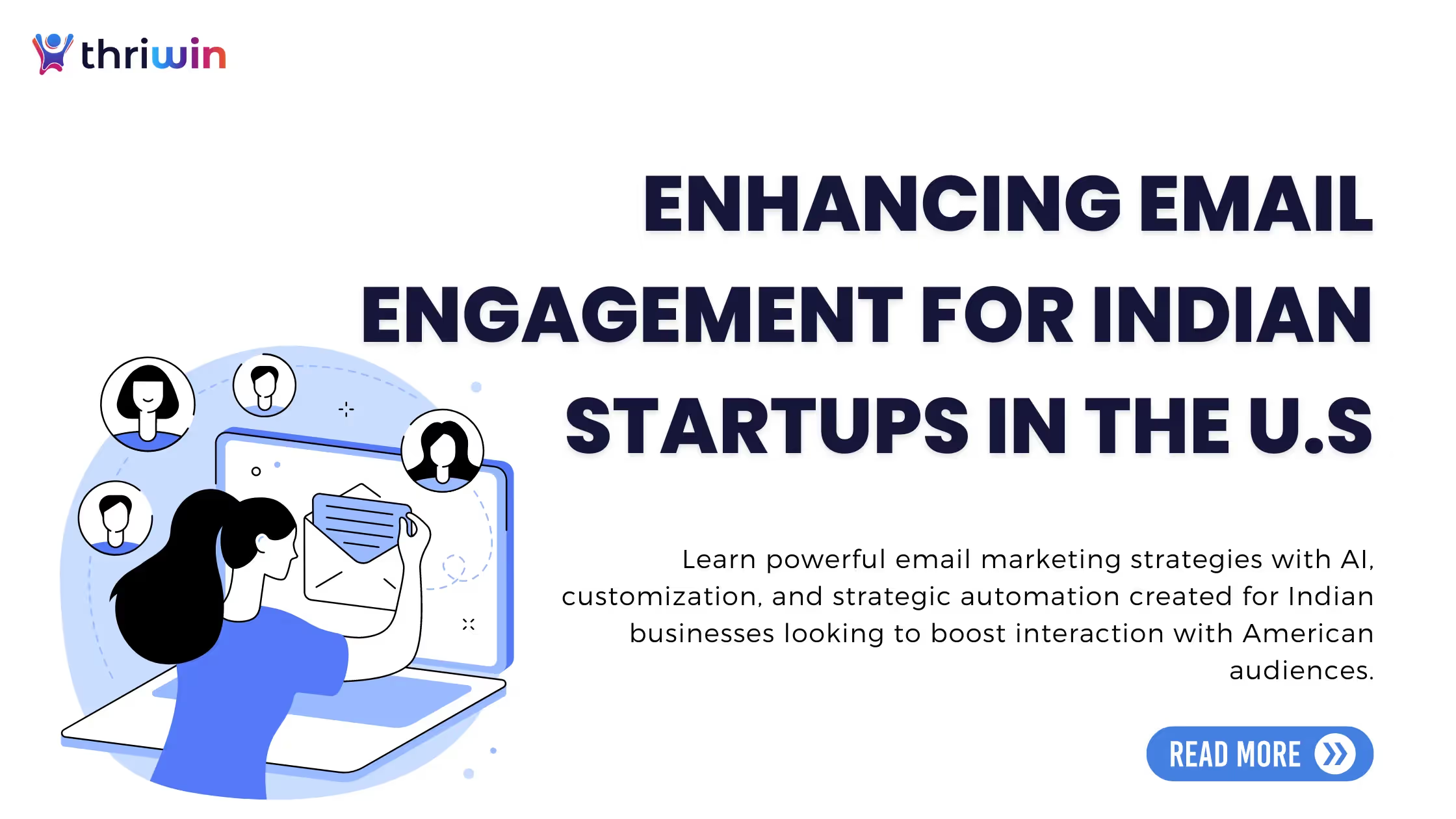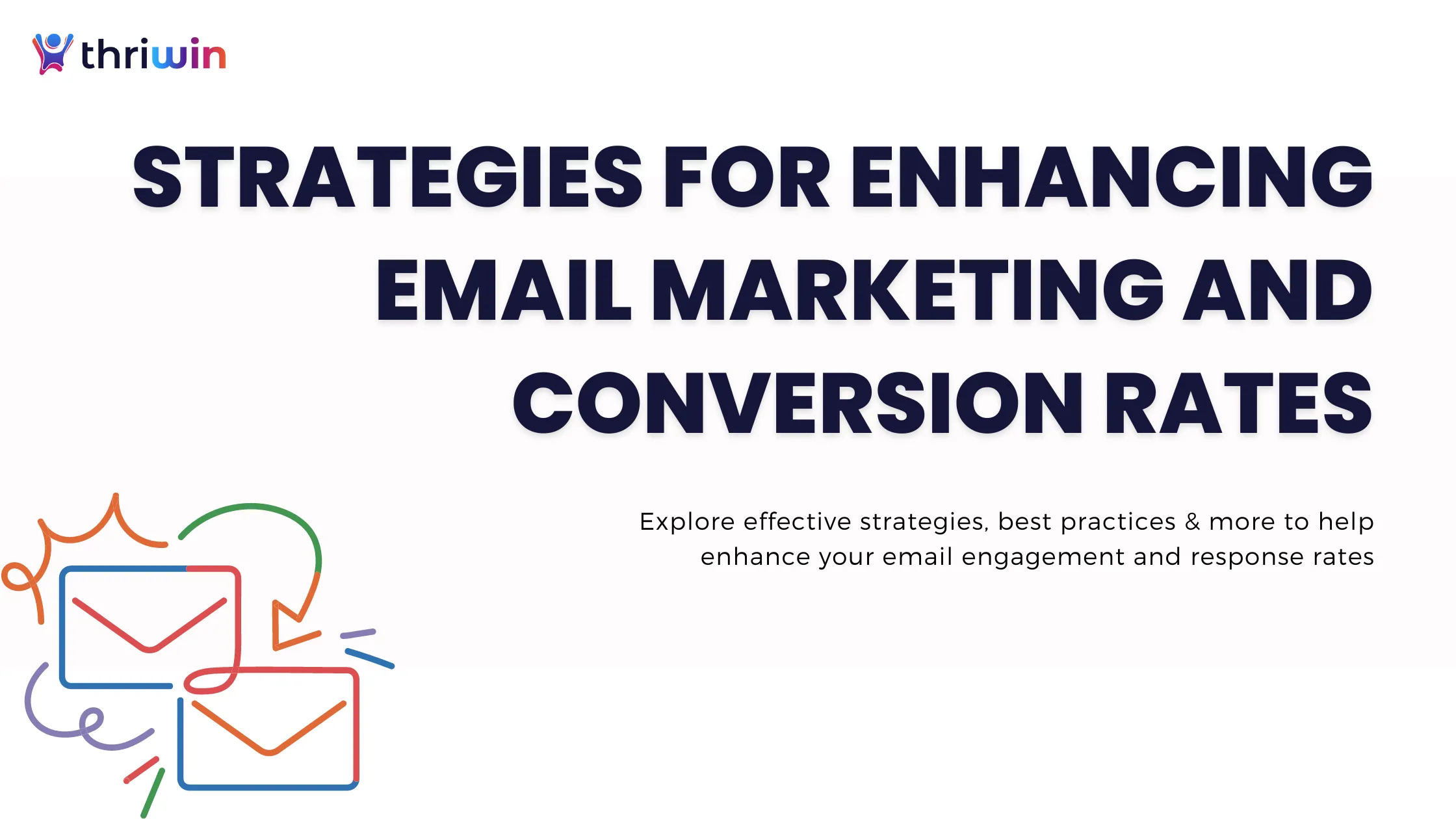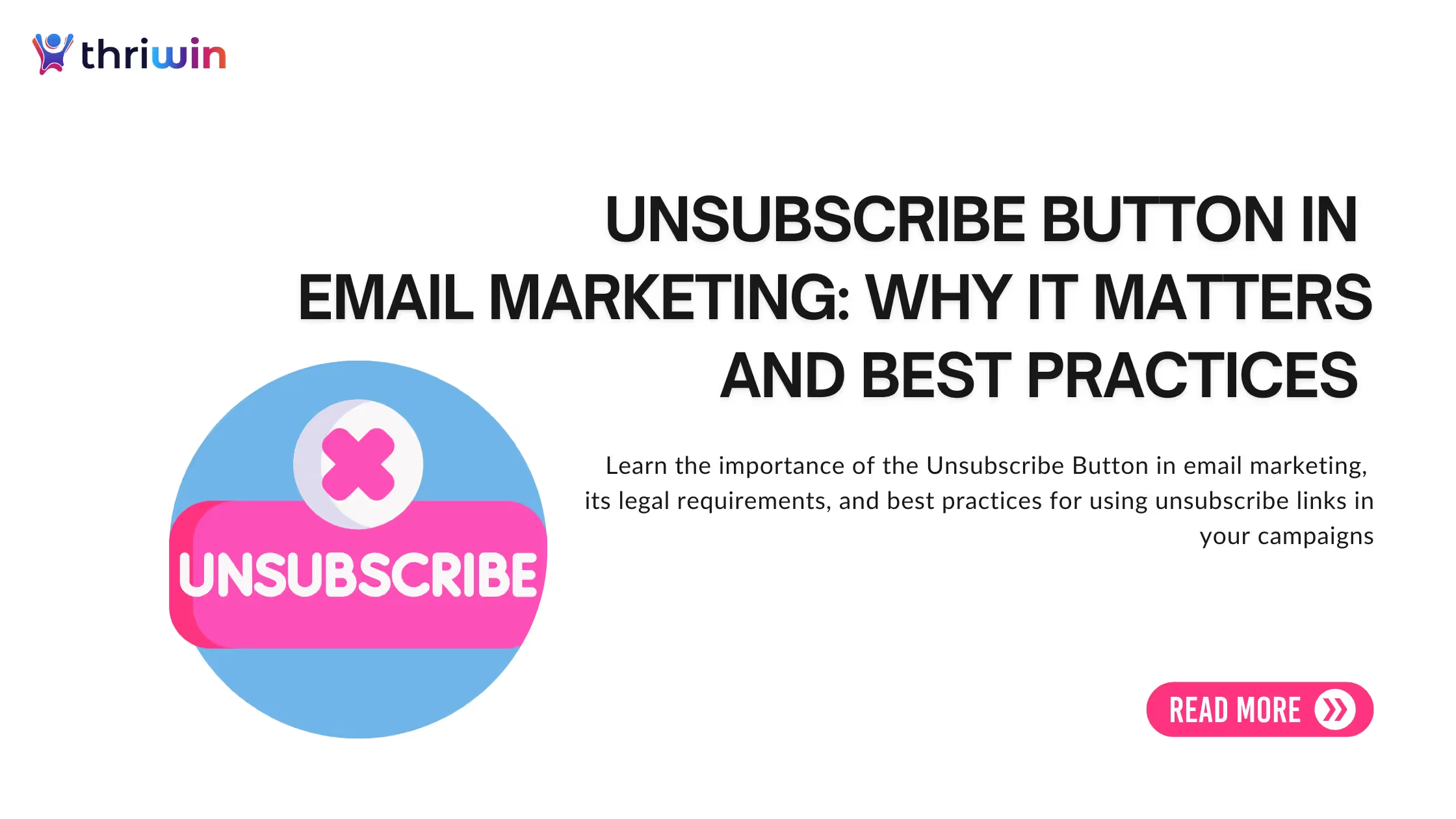In today's era of digital overload, businesses need to respect the preferences of their audience, particularly when it comes to email marketing. With 86% of consumers expecting transparency around data usage and 90% wanting control over how their information is collected, providing a clear opt-out option is more than just a courtesy—it's essential.
Opt-out options meet legal requirements like GDPR (General Data Protection Regulation) and CAN-SPAM Act and build trust by ensuring recipients receive relevant communications. A well-executed opt-out process strengthens brand reputation and fosters long-term relationships with privacy-conscious audiences.
What is an Opt-Out?
An opt-out refers to the ability provided to recipients to withdraw from receiving marketing communications. Email marketing typically offers users the option to unsubscribe from future emails or prevent their data from being used for marketing purposes. Providing clear and easy-to-access opt-out options is a legal requirement in many regions and a best practice for building long-term customer trust.
Difference Between Opt-In and Opt-Out
The key distinction lies in how consent is given. With opt-in, users actively grant permission to receive emails, often by selecting a box or filling in their details. Opt-out allows users to revoke this permission after being automatically included, often as part of a service they signed up for.
Different Types of Opt-Out
Not all opt-out processes are the same in email marketing. Understanding the different types of opt-out methods can help businesses tailor their approach to meet legal requirements and customer expectations. Each type serves a specific purpose, whether allowing users to unsubscribe or request data deletion.
1. Explicit Opt-Out Emails
In explicit opt-out situations, users must take action to remove themselves from a mailing list, such as clicking on an unsubscribe link within an email. This is a direct and user-initiated process.
2. Implicit Opt-Out Emails
Implicit opt-out occurs when users are automatically subscribed to receive emails but can later opt out if they prefer not to receive communications. This is common when signing up for online services where the user is automatically added to a marketing list unless they specify otherwise.
3. Delete My Data Requests
With increasing global awareness of data privacy, laws like GDPR empower individuals to request the deletion of their data. This request goes beyond unsubscribing from emails, requiring businesses to erase a user's data from their systems permanently.
Importance of Respectful Communication with Email Marketing Practices
Respecting your audience's preferences helps foster meaningful connections. By offering straightforward, easy ways to unsubscribe or manage email settings, you show value to their time and choices. This thoughtful approach strengthens trust and leaves a lasting positive impression, even if they opt-out.
1. Building Trust Through Transparency
Clear opt-out options foster a sense of openness and respect. Recipients are more inclined to trust brands that make it simple to opt out of emails they no longer wish to receive.
2. Legal Compliance in Opt-Out Processes
Laws such as GDPR and CAN-SPAM mandate that businesses provide recipients with a straightforward and transparent way to opt out. Non-compliance with these laws can lead to significant fines and damage your reputation.
3. Reducing Negative Perception with User-Friendly Opt-Outs
A user-friendly opt-out process minimizes frustration. If recipients find it easy to unsubscribe, they are less likely to feel annoyed or develop negative associations with your brand.
4. Maintaining Customer Relationships After Opt-Out
Even after someone opts out, it's essential to maintain a positive relationship. Offering alternative ways to engage, such as through social media or communication media, can help preserve goodwill.
5. Balancing Marketing Goals and Respect for Customer Preferences
While marketing aims to maximize engagement, respecting customer preferences is essential. Balancing these goals through thoughtful email practices ensures that your audience feels valued, not overwhelmed.
How to Create a Proper Opt-Out Email
Creating an effective opt-out email requires clarity, simplicity, and a tone that respects the recipient's decision.
1. Clear and Concise Opt-Out Language
Use straightforward language such as "Click here to unsubscribe" or "Opt out of future emails." Avoid convoluted or misleading terms that could confuse recipients.
2. Placement of Opt-Out Links
Place the opt-out link in a prominent location, typically in the email footer. Ensure that it is easy to find without requiring recipients to scroll through large blocks of text.

3. Personalizing the Opt-Out Message
Personalizing your opt-out message can make the process feel less transactional. For example, you can offer alternatives like reducing email frequency or choosing specific topics of interest.
4. Confirming Opt-Out Requests
After a user opts out, it's best practice to send a confirmation email, reassuring them that their request has been processed and that they will no longer receive further communications.
5. Providing Alternative Communication Preferences
Instead of only offering an unsubscribe option, consider alternatives such as adjusting email frequency or subscribing to specific types of content that may better match the user's interests.
6. Compliance with International Opt-Out Regulations
Ensure your opt-out process complies with all applicable regulations, including GDPR, CAN-SPAM, and other local laws that govern data privacy and email marketing.
Common Causes of Email List Recipient Opt-Outs
People opt out for various reasons, often because they feel overwhelmed by too many emails or content that doesn't match their interests. Emails that lack relevance or feel impersonal can push subscribers away. Recognizing these common frustrations allows businesses to fine-tune their approach, delivering more meaningful content that resonates with their audience.
- Overwhelming Email Frequency
Sending emails too frequently can overwhelm recipients, leading them to unsubscribe. Striking the right balance in frequency is crucial to retaining engagement.
- Irrelevant Content
When emails aren't relevant to the recipient's interests or needs, they're more likely to opt out. Tailoring content to the audience's preferences is vital to reducing unsubscribe rates.
- Lack of Personalization
Generic, one-size-fits-all emails often cause recipients to lose interest. On the other hand, personalized emails make recipients feel valued and understood.
- Difficulty in Opting Out
If recipients find it challenging to unsubscribe, they may opt-out and develop a negative perception of the brand. Ensuring a seamless opt-out process is essential.
- Poor Email Design or Functionality
Emails that are hard to read, navigate, or engage with across different devices can turn people off. Transparent, mobile-friendly emails can make a big difference in keeping recipients interested.
- Perceived Spam or Irrelevant Emails
If emails come across as spammy or irrelevant, people are more likely to unsubscribe or mark them as spam, hurting your sender's reputation.
How to Keep Subscribers Engaged
Keeping subscribers engaged starts with making your emails valuable and relevant. Personalizing content, offering flexible frequency options, and ensuring each message offers something worthwhile can reduce opt-outs. Incorporating minor alterations, such as giving readers the choice of the frequency of your communication with them or even adjusting the content of the emails to fit their best liking, can do wonders in keeping the audience intact.
1. Providing Benefits in Each Mail
Send every email daily with value. It should include discounts, offers, insights, or recommendations. When recipients find your emails useful, they're less likely to opt-out.
2. Personalizing Content Based on Preferences
Categorize your target groups based on preferences and behavioral patterns to deliver more relevant content. This personalization can increase engagement and reduce opt-outs.
3. Implementing Flexibility in Communication Frequency Among Recipients
Let recipients determine the frequency at which they receive your communications. Allowing things such as weekly and monthly emails may reduce the chances of some users permanently opting out as they feel the pressure of repeated messages.
4. Evaluating and Refining Headline Approaches
A/B testing subject lines can help ensure that your emails get noticed right from the beginning and that everything, including the tone, is correct. More attractive email subject lines have better open rates and lower opt-out rates.
5. Emailing Strategies That Are Different And Hopeful
Add points such as polls, surveys, or quizzes to entertain the recipients. The additional functionalities included in such emails can enrich and make them fun to receive.
6. Email List Hygiene Is Very Critical
With time, it is preferable to cut off inactive subscribers from your email list to enhance the deliverability and retention of your audience. This decreases the chances of sending unsolicited emails.
How Opt-Out Affects Data Collection and Marketing Campaigns
Businesses lose valuable insights that could enhance future campaigns when someone opts out. Each opt-out reduces the data available for refining messaging and targeting. Additionally, managing opt-out requests properly is essential for staying compliant with privacy regulations. Balancing the need to respect customer choices with the goals of your marketing efforts is critical to maintaining compliance and effectiveness.
1. Loss of Valuable Customer Data
Each opt-out represents a loss of potential customer data that could have been used for targeting and personalization.
2. Decreased Engagement Rates
As opt-outs increase, overall engagement metrics such as open and click-through rates will likely decrease, limiting the reach of your campaigns.
3. Increased Compliance Costs
Managing opt-outs and ensuring compliance with data privacy regulations can incur additional operational costs for businesses, but these costs are necessary for legal and ethical reasons.
4. Legal Ramifications of Not Offering Opt-Out Options
Failing to provide transparent and compliant opt-out mechanisms can result in legal penalties, making it necessary to follow international guidelines like GDPR and CAN-SPAM.
5. Impact on Segmentation and Personalization
With fewer data points, your ability to segment and personalize campaigns diminishes, reducing the effectiveness of your marketing efforts.
6. Reduced Marketing Reach
As opt-out rates increase, the overall reach of your email marketing campaigns will shrink, limiting your ability to connect with a broad audience.
Final Thoughts: Why Offering Opt-Out Options is Essential
Providing opt-out options is not only a legal requirement but also a critical element of maintaining customer trust. By giving recipients control over their communication preferences, businesses show respect for privacy and choice. Clear, easy-to-use opt-out mechanisms also help companies avoid legal pitfalls and keep their email lists engaged. In the long run, this approach fosters a positive relationship with customers and ensures marketing practices are both compliant and effective.
Streamline Your Opt-Out Process with Thriwin
Managing opt-out requests can be a complex task, but the right CRM tool can simplify the process. Thriwin makes it easy by automating the entire process and ensuring you stay compliant with legal requirements. With Thriwin, you can effortlessly handle opt-out requests, keep your email lists clean, and ensure your messages are always aligned with customer preferences. Its smart features help you maintain compliance while delivering relevant, timely content that resonates with your audience. Ready to simplify your opt-out management and elevate your email marketing? Visit thriwin.io today and discover how easy it can be!
FAQs
Q1: What is an opt-out in email marketing?
An opt-out in email marketing allows recipients to unsubscribe from receiving further emails. It's a way for users to revoke permission for businesses to contact them via email.
Q2: Is offering an opt-out option legally required?
Yes, laws like GDPR, CAN-SPAM, and others require businesses to offer clear opt-out options in their marketing emails. Failure to comply can result in fines.
Q3: How does opt-out impact my email marketing campaigns?
When recipients opt-out, your email list becomes more targeted, leading to better engagement. While it reduces the number of people on your list, it helps ensure your communications reach interested parties.
Q4: What’s the difference between opt-in and opt-out?
Opt-in requires explicit consent from the recipient to receive emails, while opt-out assumes consent until the user requests to stop receiving communications.
Q5: How can a CRM help manage opt-out requests?
A CRM system can automate opt-out requests, track recipient preferences, and ensure compliance with legal regulations. It helps streamline the process, keeping your marketing efforts efficient and compliant.
%201.svg)






